The Year that Was: 2015 in Mould Illness and CIRS
2015 was a big year for mould illness/chronic inflammatory response syndrome due to interior environment of water damaged buildings (CIRS-WDB). The science and awareness grew in leaps and bounds and while there is much, much work to be done in both of those areas it was an exciting year, with 2016 shaping up equally so. Let’s break it down month by month.
February
James Baber interviewed on Bulletproof Radio
Technology executive James Baber appeared on Dave Asprey’s Bulletproof radio podcast outlining his recovery from mould illness / CIRS. James also wrote out the specifics of his therapy in the comments section.
Why was this important?
Bulletproof radio has a significant reach and this interview provided a taste of Moldy, released a few months later, which James would also feature in. James showed how recovery is possible via the Shoemaker protocol and how even a new LEED certified building could have moisture problems.
March
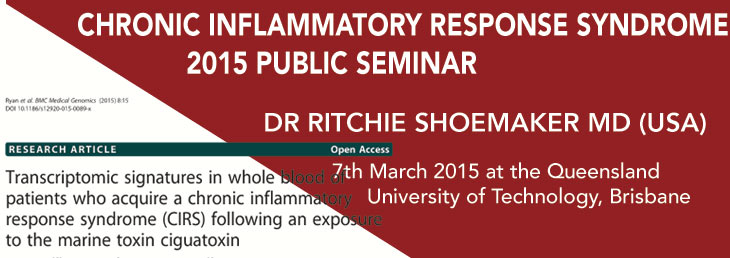
Australian CIRS conference
Dr. Ritchie Shoemaker flew to Australia in March for two well attended conferences in Brisbane and Sydney. The former was a general conference open to the public, the latter a two day health practitioner conference, both sponsored by Mycotox.
Why was this important?
The conferences provided a wealth of information for patients and health professionals alike and led to half a dozen practitioners signing up for Shoemaker protocol certification. It also showed that Australia is the most mould illness aware country behind the United States.
April
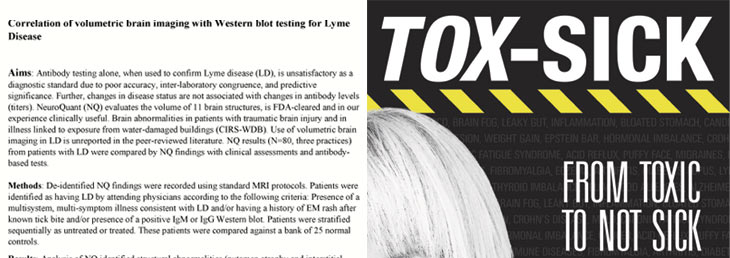
CIRS ciguatera genomic study published
Transcriptomic signatures in whole blood of patients who acquire a chronic inflammatory response syndrome (CIRS) following an exposure to the marine toxin ciguatoxin by James Ryan, Qingzhong Wu and Ritchie Shoemaker was published in BMC Medical Genomics (full text).
Why was this important?
This paper lays down the methodology and science of researching genomic effects of CIRS which will be used for the CIRS-WDB and VIP genomic paper to be published this year. All chronic inflammatory response syndromes have a final common pathway so expect similar, but not exactly the same, sets of genes to be dysregulated in CIRS-WDB, like they are in CIRS ciguatera.
NeuroQuant III Study is presented at NorVect
Ahead of its peer review publication in 2016, a poster presentation, Correlation of volumetric brain imaging with Western blot testing for Lyme Disease (text) was presented at NorVect 2015 by Dr. Shoemaker via video conferencing and later at the Phoenix conference.
Why was this important?
This paper shows correlation between NeuroQuant findings of putamen atrophy for treated Lyme disease and edema of the right hemisphere’s thalamus for untreated Lyme. It also showed correlation between EM rash and Quest Western Blot with those changes, but not with IgeneX Western Blot. This could be a game changer for those who have relied on IgeneX WB as their sole indicator for Lyme diagnosis.
TOX-SICK published
Actress, author and American celebrity Suzanne Somers published her umpteenth book, TOX-SICK: From Toxic to Not Sick (Amazon US and Australia), which featured interviews with several health practitioners including Dr. Sherry Rogers, Dr. Stephen Sinatra, Dr. Garry Gordon and Dr. Shoemaker.
Why was this important?
Mainstream exposure for mould illness and Dr. Shoemaker as it provided an excellent summary of CIRS-WDB and Shoemaker’s latest research. A worthy read.
June
Moldy released
A sixty minute documentary about mould illness and the effects of mould on health was released via video on demand and DVD. Produced and hosted by Dave Asprey this high quality film was a great start in raising awareness for mould illness. It featured interviews with several doctors and mould illness survivors, including James Baber, Julie Rehmeyer, Lisa Petrison, Gina Lopez and Brenda Hinck Harper. The extras, including interviews with Dave Asprey, Ritchie Shoemaker and Doug Kaufmann were also just as informative.
Why was this important?
Moldy is only the second feature length documentary released about mould illness, the first being Black Mold Exposure in 2009. Due to Dave Asprey’s popularity in the health and biohacking-sphere it was seen by many thousands (last heard 100,000) of people and provides a great introduction to this complex chronic illness. Dr. Shoemaker featured prominently in the film and the extras.
August
Dr. Shoemaker interviewed by Chris Kresser
Functional health practitioner and paleo advocate Chris Kresser interviewed Dr. Shoemaker about CIRS for his Revolution Health Radio podcast.
Why was this important?
Like Dave Asprey, Chris Kresser is popular in the alternative health and paleo world, and so podcasts like this raises awareness for CIRS and the Shoemaker protocol. Read the comments section to see some lively debate.
September
Building Biology Conference 2015
The 2015 Building Biology Conference: Ecological Prescriptions for Healthy Families took place. Speakers included Dr. Janette Hope, MD, Dr. Martin Pall, Ph.D., Peter Sierck; and Falken Foresaw. Topics included: mold and mycotoxins, smart meters, sustainable and Vedic architecture, volatile organic compounds, autism triggers, microwave and low-frequency EMFs, and spectrum analysis and shielding.
Why was this important?
Conferences like these are important mediums for sharing ideas about mould illness, even if they don’t follow Shoemaker’s theories.
Toxic Mould Support Australia website launches
Following on the creation of an FAQ for the TMSA facebook group in March this author (Caleb Rudd) created an adjunct website.
Why was this important?
This site provided a permanent home for the FAQ and resources section in addition to news and feature articles like this one. It raised awareness for mould illness/CIRS and provided support to current and future patients. Since its launch it has ranked high in Google results (first, or near first for “toxic mould support” and “toxic mould Australia” for instance).
November
Second State of the Art in Mold, Wet Buildings and CIRS conference
The second State of the Art in Mold, Wet Buildings and CIRS conference (aka the Phoenix conference) was held in Phoenix, Arizona over four days from November 12 to 15. The video archive can be purchased from Cleeng. (Use the code CRPHmJ for 10% off) or purchase each day separately via Surviving Mold. An impressive roster of presenters from the Shoemaker research team and those further afield such as indoor air quality experts – including Greg Weathermen, Carl Grimes and Aussies Vince Neil and David Lark – were also outstanding. Jonathan Lee Wright wrote a detailed summary but for myself key speakers included:
- Jimmy Ryan – The Genomics of CIRS
- Ryan outlined the results of the forthcoming CIRS-WDB and VIP genomics paper which compares genomic assays of 18 CIRS-WDB patients at various stages in recovery (and occasional re-exposure) alongside their use of VIP therapy.
- Looks at microRNA genes which regulate RNA transcription. Different to DNA.
- All the Shoemaker certified practitioners’ presentations are worthy of the price of admission. The affable Dr. Scott McMahon on two very common symptoms, abdominal pain and headaches in CIRS and in another lecture detailed the NeuroQuant II results. Dr. Keith Berndtson talked about nanoparticles (hint: they’re really, really small) and MAST cells and CIRS in two groundbreaking lectures.
- The iconoclastic Erik Johnson described the 30 year neglect of CFS researchers into examining a CFS prototype’s mold avoidance theory and therapy. Mortifyingly no CFS researchers were in attendance at the conference either.
- The Frey, Belperron and Velletri families’ talked about their stories and struggles with disbelieving spouses, government/school systems and communities in general. Heartbreaking and hopeful at the same time.
- Lisa Petrison presented the results from the Paradigm change mold avoidance survey the most promising therapy can summarized with three key terms, avoidance, avoidance and yes, more avoidance.
- Dozens and dozens of other truly great presentations. Please watch them.
CIRS Consensus statement published
Authored by several Shoemaker certified doctors, including Australia’s Sandeep Gupta and lead authored by Keith Berndtson, Medically sound investigation and remediation of water-damaged buildings in cases of CIRS-WDB – Consensus statement – Pt 1, was published (full text).
Why was this important?
A powerful one-two punch after the conference, the consensus statement part 1 summarized and provided references for the latest research in regards to CIRS-WDB, how it’s not just due to mould but outlined all the various biotoxins that come into play and their effect on human biology. A great document to give to any health professionals or researchers.
December
Toxic Mould Support Australia facebook group reaches 900 members.
The TMSA facebook group saw tremendous growth in 2015. From 250 or so at the start of year, to 500 by the end of April and 900 by the year’s end. Shout outs to the two other admins Jason Mullen and Dan White who helped keep it all running smoothly.
Looking at the Crystal Ball for 2016
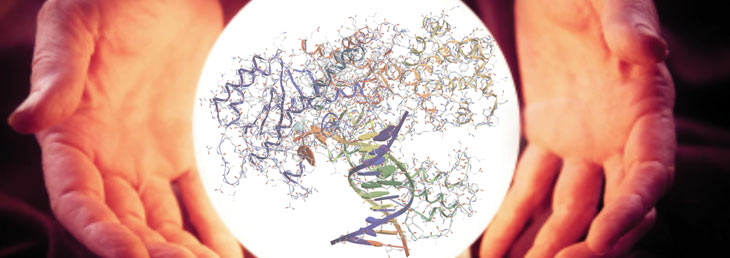
Consensus Statement Part 2 (Remediation)
First cab of the rank will be the publication of the part 2 of the consensus statement. Focusing on building testing and remediation rather than biology this brings together a group of IAQ experts with science backed recommendations. Expect a release in early 2016.
Mould Warriors e-course
Developed by Dr. Sandeep Gupta and myself this online book and video course will provide a dummies style guide to help navigate the complex world of CIRS and mould illness. Expect a release in first quarter 2016.
CIRS Textbook
Mentioned several times at Phoenix conference a CIRS textbook could be an invaluable research to patients, physicians and indoor air quality professionals. While April was mentioned at Phoenix that seems optimistic, later in the year is more likely.
Genomics of CIRS-WDB and VIP therapy
The full title: Correction of abnormalities in a suite of 900 genes using intranasal vasoactive intestinal polypeptide restores gray matter nuclear atrophy and clinical functioning in Chronic Inflammatory Response Syndrome, shows symptom, brain and genomic normalization with the use of VIP spray, is Jim Ryan and Shoemaker’s big CIRS genomic paper following on from the ciguatera CIRS paper in 2015. Showing how VIP can correct atrophy and gene dysregulation is a game changer for CIRS and medicine in general.
Publication of NeuroQuant II-IV Studies
With one NeuroQuant study already published in peer review, team Shoemaker will be publishing NeuroQuant II-IV (and beyond) studies in 2016 and 2017. Expect publication for NQ II in first half of the year and others in second half.
- NeuroQuant I – This was published in 2014 in Neurotoxicology and teratology – Structural brain abnormalities in patients with inflammatory illness acquired following exposure to water-damaged buildings: A volumetric MRI study using NeuroQuant, – consisting of 17 patients and 18 controls. It laid the groundwork for using NeuroQuant to diagnose and track CIRS.
- NeuroQuant II – A larger cohort (n=91). 23 controls, 28 CIRS untreated, 28 CIRS partially treated (avoidance, CSM and MARCoNS), 20 CIRS fully treated (other treatment steps – but not VIP). Edema improve with treated CIRS to level of controls but caudate did not normalize. It shows a relationship of correction of microscopic interstitial edema by stage of therapy. Presented by Scott McMahon on Sunday (Day 4) at the Phoenix conference. Currently going through the peer review process.
- NeuroQuant III – This is the Lyme study presented at NorVect (see above). N=187 (scans). 8 medical practices. Shows correlations between putamen atrophy in treated Lyme and right thalamus edema in untreated Lyme. Findings presented by Dr. Shoemaker on Sunday (Day 4) at Phoenix.
- NeuroQuant IV – This looks at multi-nuclear (MNA) atrophy across both mold and Lyme CIRS. N=489, c=26 with 15 referring physicians. Validates scoring system which Shoemaker cert docs have been using in their spreadsheets. Shows improvement of atrophy with VIP therapy although longer term if patient has MNA as opposed to only caudate atrophy, which needs six months at 4 spray per day. Findings presented by Dr. Shoemaker on Sunday (Day 4) at Phoenix.
Third State of the Art in Mold, Wet Buildings and CIRS conference
We don’t know where, we don’t know when but it will be another must see event, one on the bleeding edge of CIRS and healthcare in general.
Well there you have it, a review of the year that was and the year to come. Did I miss any important events in the mould illness and CIRS world? Let me know in the comments.
Image sources: Bigstock.com / Moldy

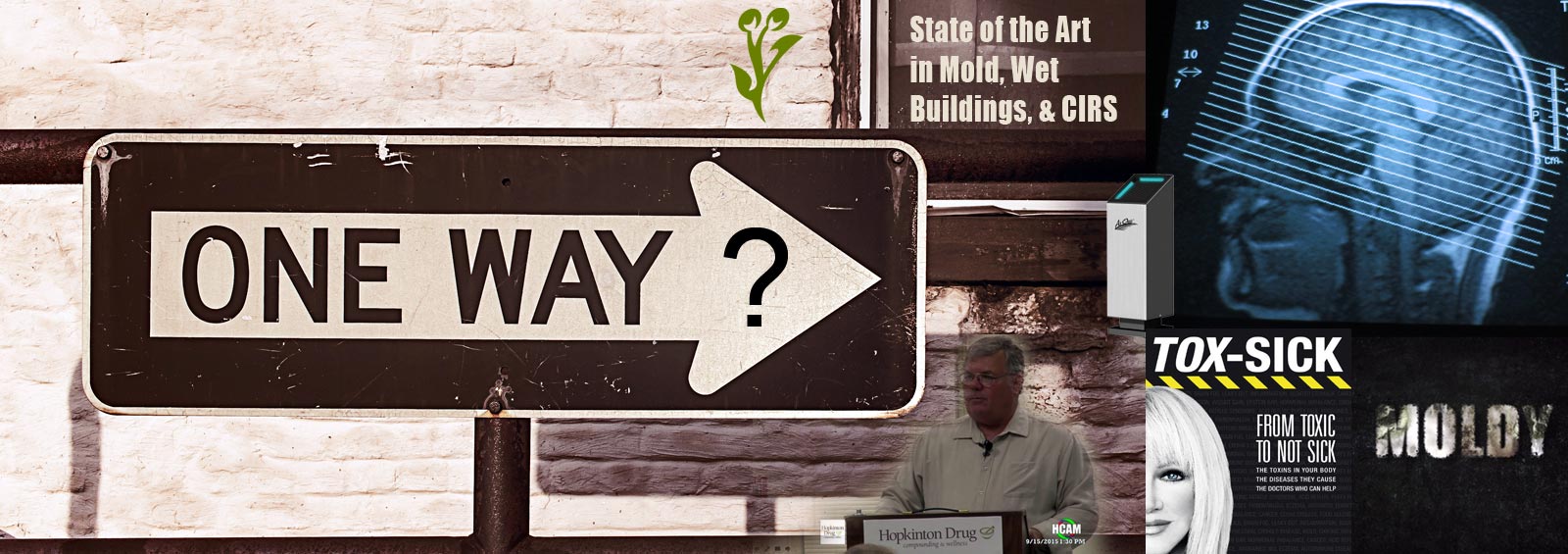
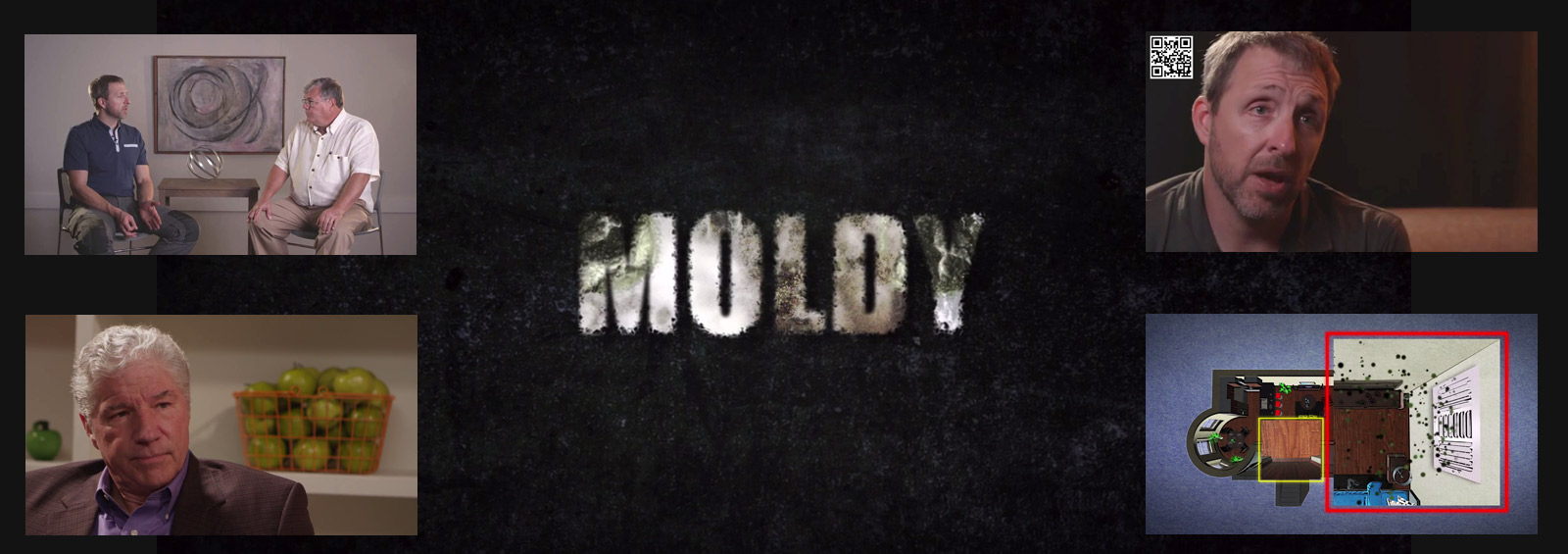
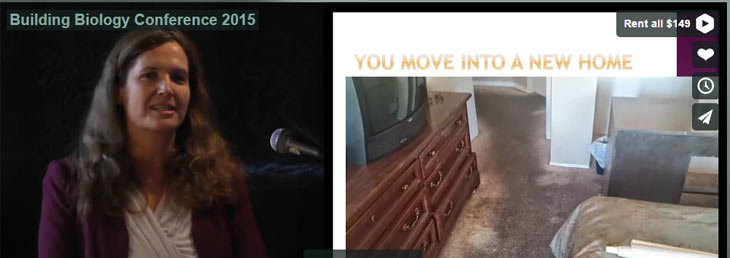
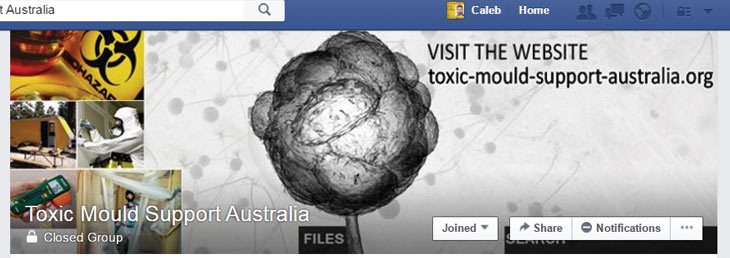

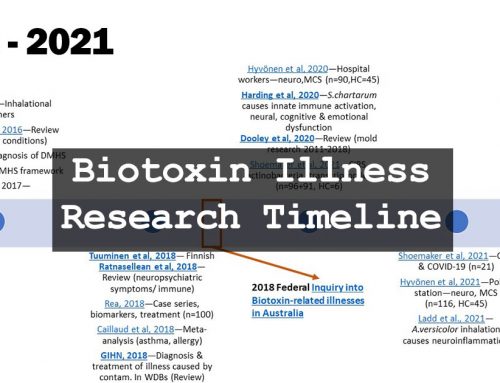

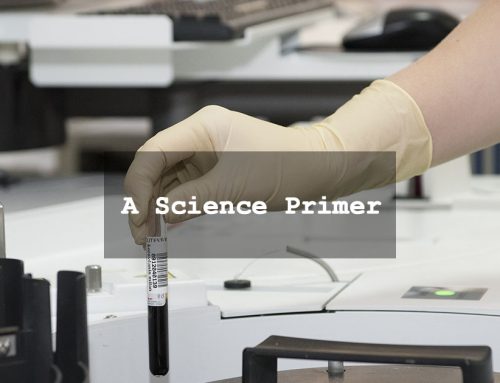
You must be logged in to post a comment.